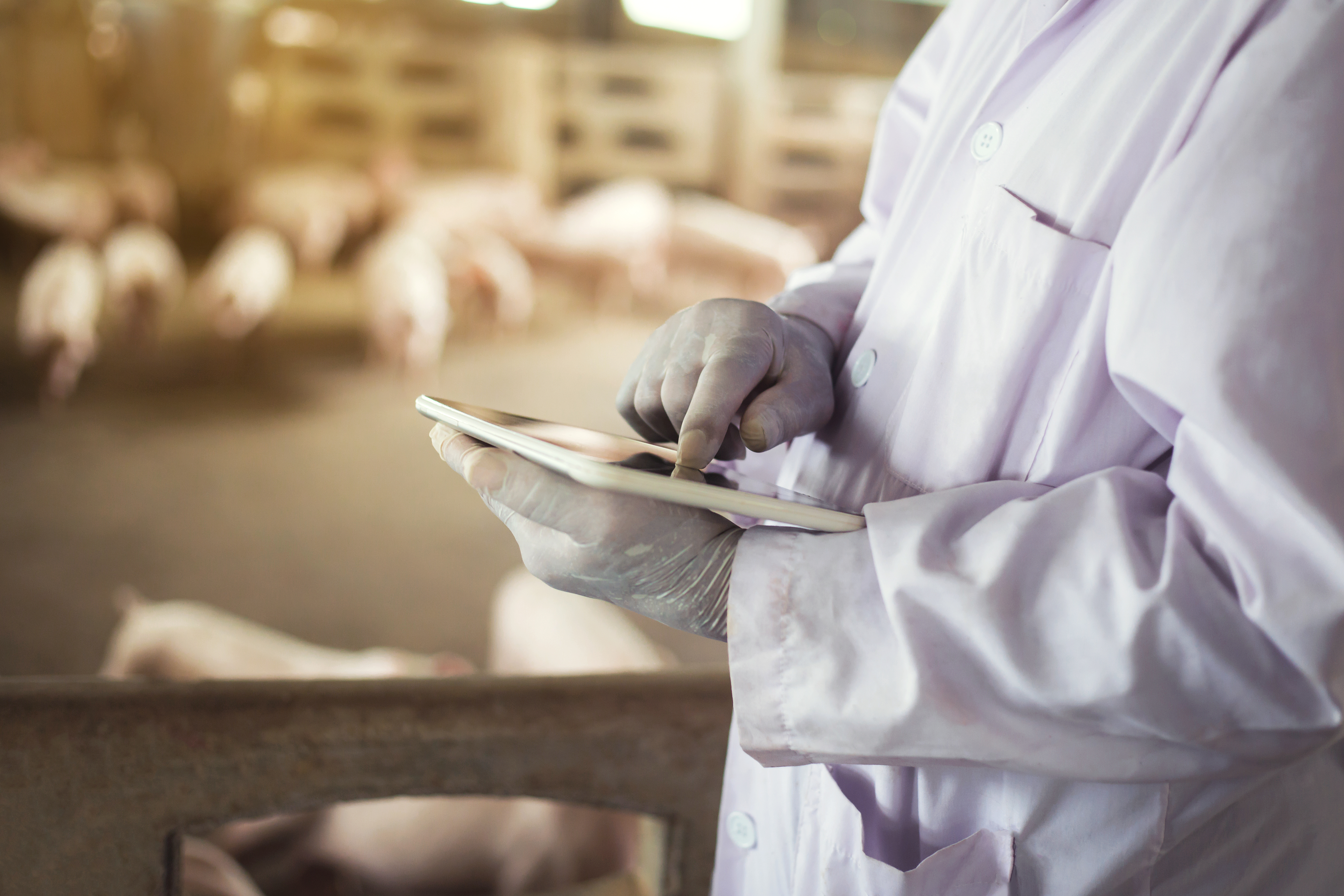Artificial intelligence for better animal welfare controls
Project timeline: 01.06.2022 – 31.12.2024 Coordination: elanyo GmbH Funding: 1,5 Mio. € through the Ministry of Food, Rural Areas and Consumer Protection Baden-Württemberg Tasks of FIT: data analysis based on video footage, project management, scientific publications |
Video recordings, along with on-site inspections, play an important role in verifying animal welfare requirements in slaughterhouses. However, existing control processes cannot guarantee seamless monitoring. Fraunhofer FIT is supporting the development of an AI to optimise operational controls and thus create more optimal conditions for improving animal welfare.
Ensuring precise monitoring
Slaughterhouses rely on four central components to provide compliance with animal welfare requirements: Suitable structural and technical conditions, the right organisation and the implementation of the slaughter process. The latter is carried out by qualified employees according to standardised work instructions. Since human or technical failure can never be completely ruled out, there is still a residual risk of deviations from animal welfare requirements. In-house inspections by animal welfare officers should help to assess animal welfare risks. Based on a risk analysis, video recordings are examined on a random basis.
The task of our animal welfare AI will be to improve the selection of video footage and present more relevant sequences to responsible officers. This means that the proposed sequences would map possible animal welfare risks in real time, with greater probability and make daily inspections more efficient. This also makes it possible to respect the data protection of all individuals who are not part of the selected images.
Video processing in the range of seconds
In the course of this specification of animal welfare controls, it is important that AI does not act as a decision maker. Rather, it should support the assessment of risky situations by humans through tagging selected sequences. Therefore, the training of the AI is specialised in the comprehensive recognition of situations with increased animal welfare risk. Various learning procedures and analysis models are being developed to enable reliable, split-second processing in real time.
Which visual features are particularly likely to influence the classification of video sequences is the task of FIT's data analysis. As part of the project, Fraunhofer FIT shares these findings in the form of scientific publications. Targeted project partnerships thereby ensure the development and embedding of animal welfare AI. In addition to managing the project, elanyo GmbH provides interfaces so that AI and technical infrastructure can work together. The Süddeutsche Schweinefleischzentrum Ulm Donautal GmbH acts as a pilot partner for practical integration.
Potential through automation
Thanks to its automated functionality, the animal welfare AI offers multiple advantages for slaughterhouses. In addition to the reliable selection of video footage in real time, it increases the accuracy of animal welfare checks. Its labelling function ensures that the decision-making power on measures remains with the responsible animal welfare officers. In addition, the AI establishes conformity with current data protection regulations.
